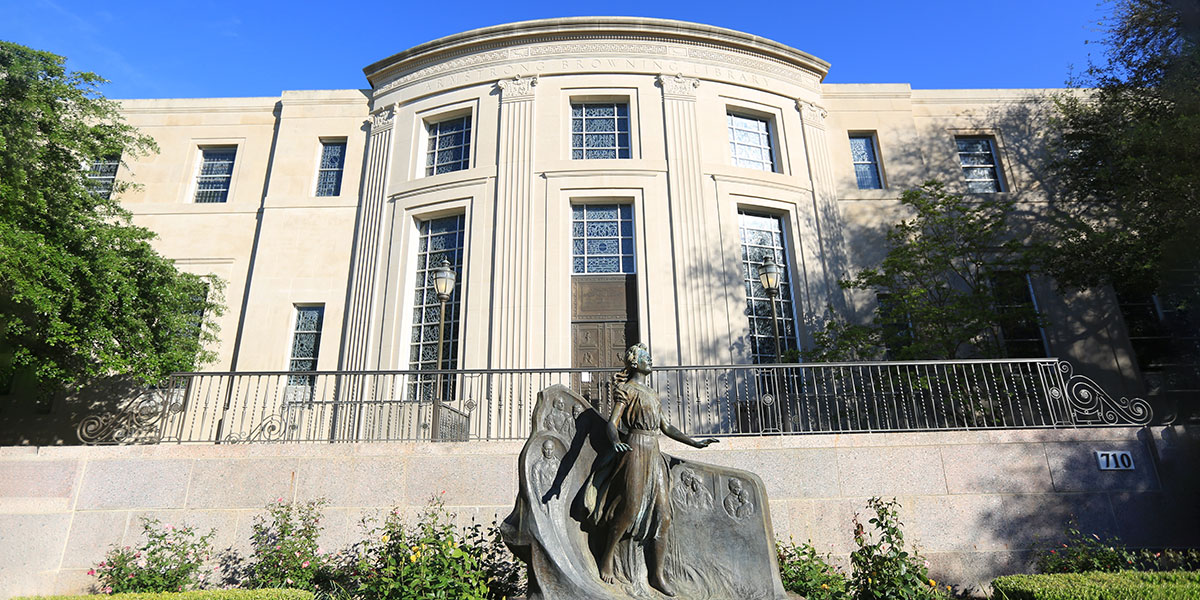Why does Baylor have the world’s leading collection of two Victorian-era English poets?

The Armstrong Browning Library and Museum (ABL) has been a beautiful part of Baylor’s campus for more than 70 years. The ABL is renowned for both its stunning appearance (often named among the nation’s most beautiful libraries) and its incredible collection of literature and art related to famous poets Robert and Elizabeth Barrett Browning.
But, you may ask — why is Baylor home to the world’s leading collection of two Victorian-era English poets?
The answer is found in the “Armstrong” part of the library’s name.
Let’s start with the Brownings, renowned British writers who married late in life and left a significant library of poetry for future generations. Decades after their prolific careers, two Baylor Bears — Dr. Andrew Joseph (A.J.) Armstrong and his wife, Mary Maxwell Armstrong — fulfilled a dream to house the Brownings’ legacy at Baylor.
Even before coming to Baylor, Dr. Armstrong fell in love with the Brownings while preparing to teach a class on their work. Shortly after joining the Baylor English department in 1908, Armstrong met and befriended the Brownings’ son, “Pen.” Over the years, the Armstrongs amassed their own collection of Browning-related manuscripts and artifacts. Eventually, he sought a space at Baylor to house them.
Then-Baylor President Pat Neff agreed with Armstrong’s request, but tasked the English professor with raising most of the necessary funds. And Armstrong did just that — managing to raise over $1.6 million, even amidst the Great Depression, to build what is now the Armstrong Browning Library. It opened in 1950. Armstrong’s collection was the foundation of the library’s early years, consisting of letters and literary manuscripts written by the Brownings, first (and later) editions of their works, and even personal household artifacts.
Scholars from around the globe still utilize the archives, and its collection continues to grow. Recently, the library acquired at auction a group of rare Browning items — letters, manuscripts, three oil paintings by “Pen” Browning, and even Robert Browning’s hat and walking stick.
Over 70 years after it opened, the Armstrong Browning Library and Museum remains a world-renowned resource, and a Baylor icon.
“The ABL is important as a place of beauty where visitors can find peace and be exposed to art, music and poetry,” says Jennifer Borderud (BA ’00, MA ’03), director of the Armstrong Browning Library. “It’s also a research center and venue for public programming that plays an important part in the creation and sharing of new knowledge — not only on the Brownings, but on the wider field of 19th-century studies and beyond.”
Sic ’em, Armstrong Browning Library!

